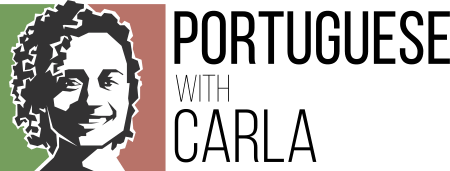The Ultimate Vocabulary Notebook
A vocabulary notebook should be a staple for every European Portuguese learner. No question! In this, hopefully, quick article, I’ll give you the recipe to build the most effective words notebook and the only one you’ll ever need, whether you’re a newbie or an advanced student.
With so many tools available to language learners such as interactive apps, online flashcards, online dictionaries, etc, many might conclude that a personal notebook consisting of words in European Portuguese is a thing of the past, an antiquated and boring relic of language learning, outdated stuff.
I will answer with a: “Maybe”, if you’re doing it wrong!
The truth is, a personal notebook can be one of the best tools at your disposal if you mold it with innovative techniques that take into consideration how the brain stores information.
So, grab a notebook (digital or in dead-tree format), and let’s get started.
The 4 steps to create the best Vocabulary Notebook
Ingredient 1: Semantic chunking
If you have no clue as to what that is, then check my recent explanation of it. But if you can’t be bothered, or for whatever reason aren’t inclined to click that link, let’s just illustrate this quickly.
It is a lot easier to find the right cooking utensil in a kitchen that is properly organized with cupboards and drawers for specific categories of things, such as cutlery, plates, glasses, clothes, etc, than to find that same utensil in a kitchen in which every drawer is labeled “miscellaneous”.
Likewise, the brain seems to retain information better when it is given information that is related in meaning. Otherwise, it would be forced to keep opening and closing drawers of word groups unnecessarily.
What does this have to do with your vocabulary notebook? Well, simple, instead of writing down every new word you come across, independent of their meaning, divide them into categories. These could be abstract or concrete. Examples are: ‘office’, for things you find there; ‘bathroom’; ‘restaurant’; ‘happy words’; ‘anatomy’; etc., the sky is the limit.
Then, when you turn to a given page in your notebook, you can review words that are related, making it a lot easier for the brain to retain them.
Ingredient 2: Take the time to write every word
No copy-paste, please. The process of actually looking at the word’s orthography (spelling), analyzing it, and writing it down is partially why these notebooks work, so please, do not cut corners here.
This is also why I also recommend you use a pen (analog or digital). The keyboard-free input will probably take longer (at least if you write it carefully enough so that in the future you can read it) and in this case, the extra time is beneficial.
Ingredient 3: Target, Base, Target
Some hyper-polyglots swear by this technique. Instead of a basic dictionary structure of “concept – definition”, use a “target – base – target” convention for each line. As an example, if you wanted to remember the European Portuguese word for foot, you would write “pé – foot – pé”. That simple. Use this schema for every new word you learn.
Ingredient 4: Connection Quadrants
Ok, you don’t have to do this for every word as it is time-consuming and perhaps unnecessary for vocabulary you seem to pick up easily. But, if you’re like me, there are certain words that just won’t stick. Everyone has them I think. For me “promiscuous” was one. The thing just refused to be retrieved from the deeps of my grey matter. Anyway, that’s by the by.
So, what to do with these stubborn words? Quadrants my friends, quadrants! Start with 2 and add more as you need them.
By quadrants I mean this: below your “target – base – target”, draw squares adjacent to each other and fill them with mental connections.
Now let’s give you examples of mental connection groups:
- Common English Root
In a square with this type of connection, you would write down an English word that has the same root as the Portuguese word. For example, for foot, “pé”, you could write “pedicure” or “pedal”. The type of connection often also gives you pronunciation cues.
- Drawing
Nothing complicated here, just draw the object here. If the word refers to something abstract, such as “anger” (raiva), you could still draw an angry face or something that represents the concept in some way.
- Personal Connection
Imagination is key here. Instead of a literal drawing or translation, in this quadrant, you would draw or write something that reminds you of that word. Let’s pick “anger” again. Write down something or someone that makes you angry. A simple and short event or account can be an excellent fit too.
- Phonetic Spelling
In this little box…you guessed it, write the word in a phonetic way. Don’t look it up in the dictionary, instead, write the word, the way you think it might be written, was it an English word.
- Synonyms and Antonyms in Portuguese

These connections will no doubt help you retrieve the word more efficiently.
That’s it, the 4 basic ingredients for an awesome European Portuguese vocabulary notebook. The story doesn’t end here though. One thing is to fill your notebook with words (check these 3 proven techniques), and another is to make use of the content you’ve just created, but that’s a subject for a different day.
For more effective and powerful tips and tricks to help you on your European Portuguese learning journey, make sure to subscribe to our podcast.
Post thumbnail image by: Abdillah Wicaksono







Hi, this is a brilliant article. There are quite a number of Portuguese words that, despite the number of times I read them, just won’t stick. And it’s not always the long ones either. I’m going to buy a notebook 🙂 Btw, found a little typo on the word “wright”. Many thanks for your site and your hard work. It’s an absolute gold mine for people like me.
Thanks for taking the time to write such a nice comment.
It’s a pleasure to help. (
PS: Typo fixed 🙂
Hello from South Africa. I’m enjoying your articles and podcasts. Will definitely implement these suggestions.
i like these memorisation ‘dicas’ very much. i have used some of them in a different setting and agree that they work e.g. writing things down,making connections, drawings – but i hadn’t come across ‘target-base-target’ before so will try that.
Thanks Marlon, I think that your posts are awesome and that you are fantastic. I loved the lesson where you help Carla tech by singing, you both sing so beautifully. You are the best company that Carla could have in her lessons! Don’t let anyone one tell you otherwise.
Well thank you very much Maryan 🙂
That’s very nice of you to take the time and write in.
Trying to ease my old brain back into language learning and I love your course, the interaction between you and Carla is so natural and easy to listen to. However as a teacher I must say that these pedagogical tips and articles are incredibly interesting and helpful. More please!! Many thanks. Caroline
Thank you very much Marlon. I have an old Portuguese notebook, from previous attempts at learning, which wasn’t very successful. So I am looking forward to trying the ideas you mentioned. I really like the idea of target – base – target. For some things I think a drawing might hinder the process but that could be more for hard to visualize words,. Thank you.
Love this! And what a great way to get another cute journal. Thank you
Another excellent article Marlon. Muito obrigado!
Muito obrigado Michael 🙂
Genius, actually, especially for more visually-orientated people like me. The “quad” drawing method really works!
Marlon – es um genio!
A genius is a bit of a stretch 🙂 But I’m glad it’s helping you.
This is really helpful Marlon, thank you!
Just a quick note about a typo, Draw (as in art work) but in this sentence it should be Drawer( as in container,box) 😊
Thank you so much Diane. I was using both terms so much in the article that I ended up mixing the spelling. Thanks again for letting us know. Appreciate it.